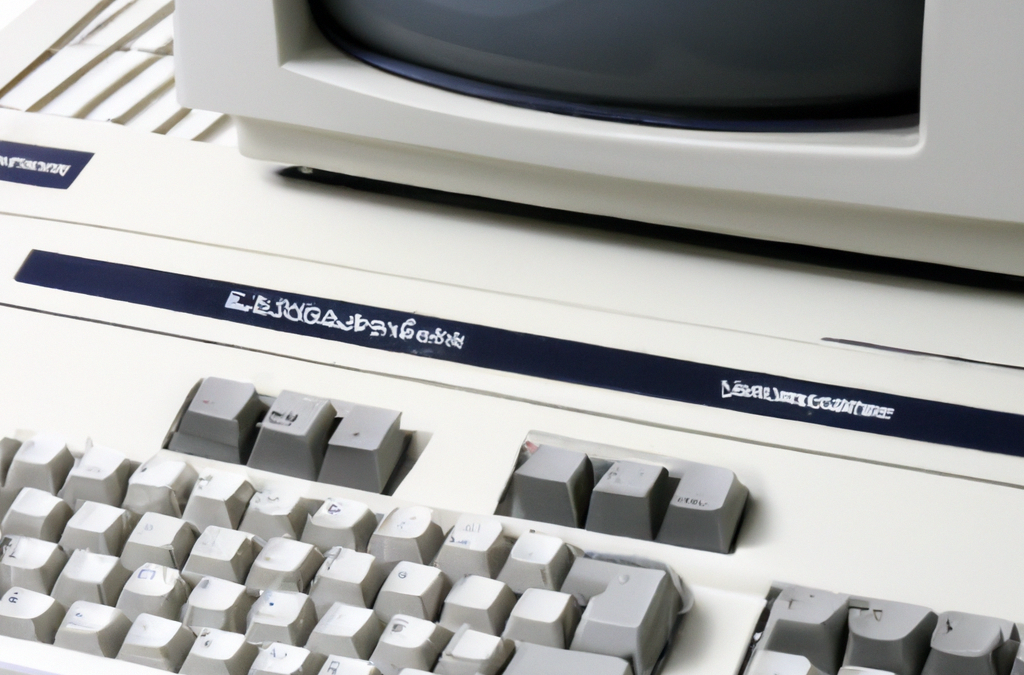The Commodore Amiga was a home computer that was first introduced in 1985 and quickly gained a following among gamers, artists, and musicians. The Amiga was ahead of its time in many ways, offering features such as multi-tasking, advanced graphics, and high-quality sound that were not available on other personal computers of its era. In this article, we will explore the history of the Amiga, from its development and early years to its eventual decline and legacy.
The Amiga was developed by a team of engineers and designers at Commodore International, led by engineer Jay Miner. The goal was to create a computer that could compete with the Apple Macintosh and the IBM PC, but with better graphics and sound capabilities. The result was the Amiga 1000, which was introduced in 1985. The Amiga 1000 featured a Motorola 68000 processor, a custom graphics and sound chipset, and 256 kilobytes of RAM, which could be expanded to a maximum of 8 megabytes.
One of the key features of the Amiga was its custom graphics and sound chipset, which allowed it to display graphics and play sound that was far superior to what was possible on other personal computers. This made the Amiga a popular choice for artists and musicians, who used it to create animations, music, and other multimedia content. The Amiga was also popular among gamers, who appreciated the smooth scrolling and fast graphics that were possible with the Amiga’s custom chipset.
In addition to its superior graphics and sound capabilities, the Amiga was also known for its multi-tasking operating system, which allowed users to run multiple programs at once. This was a significant departure from other personal computers of the time, which could only run one program at a time. The Amiga’s multi-tasking capabilities made it popular among business users, who could use it to run multiple applications simultaneously.
Despite its many strengths, the Amiga faced a number of challenges over the years. One of the biggest challenges was competition from other personal computers, such as the IBM PC and the Apple Macintosh. The Amiga’s custom hardware made it more expensive to produce than other personal computers, which made it more difficult for Commodore to compete on price. Additionally, the company struggled to develop and market the Amiga effectively, and by the late 1980s, it was facing significant financial problems.
In 1994, Commodore filed for bankruptcy, and the Amiga was sold to a company called Escom. Escom attempted to revive the Amiga, but it was unable to do so, and the company went bankrupt in 1997. After a series of ownership changes, the Amiga was eventually purchased by a company called Amiga, Inc., which attempted to develop a new version of the Amiga, called the AmigaOne, but this effort was ultimately unsuccessful.
Despite its decline, the Amiga has left a lasting legacy. The Amiga’s advanced graphics and sound capabilities, as well as its multi-tasking operating system, influenced the development of other personal computers and gaming consoles. Today, the Amiga continues to have a dedicated fanbase, who appreciate its innovative technology and its role in the history of computing.
Here are ten interesting facts about the Commodore Amiga:
- The Commodore Amiga was first released in 1985 as a home computer and was one of the first computers to support graphics and sound.
- The original Amiga model was the Amiga 1000, which had an impressive 256KB of RAM and an Agnus chip that provided support for graphics and sound.
- The Amiga was known for its advanced graphics capabilities, and was widely used for video production and gaming.
- The Amiga’s operating system, AmigaOS, was ahead of its time and featured a graphical user interface, preemptive multitasking, and virtual memory management.
- The Amiga was also popular for its expansion capabilities, with various third-party add-ons available, such as the Video Toaster, which was a popular video production tool.
- The Amiga was used in several films and TV shows, including Star Trek: The Next Generation, and is considered to be one of the most influential computers of all time.
- The Amiga’s graphics and sound capabilities made it a popular choice for musicians and artists, and it was used by musicians such as Jean Michel Jarre, Fleetwood Mac, and Genesis.
- The Amiga was also popular for its games, with a large library of classic games such as “Elite,” “Populous,” and “Shadow of the Beast.”
- Despite its popularity, the Amiga struggled to compete with the IBM PC and Apple Macintosh, and Commodore filed for bankruptcy in 1994.
- The Amiga still has a dedicated following, and new hardware and software is still being developed for the platform. There are also numerous emulators available that allow users to run Amiga software on modern computers.
In conclusion, the Commodore Amiga was a revolutionary home computer that was ahead of its time in many ways. Its advanced graphics and sound capabilities, multi-tasking operating system, and user-friendly interface made it a popular choice among artists, musicians, gamers, and business users. Although the Amiga ultimately faced challenges and was eventually discontinued, its legacy continues to live on, and it remains a significant part of the history of computing.
Disclaimer: This article was created using ChartGPT. Machines writing about machines. The image was created by DALL·E 2
As Always I’ll be improving this article over time with help from our AI overlords. Alternatively, if you’d like to contribute to this article using AI-generated text please get in touch.



That was my first thought…